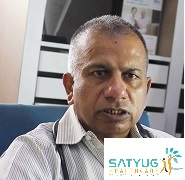VP Shunt Surgery cost in India

| Surgery Name | Cost | Room-Category | Hospitalization |
|---|---|---|---|
| VP Shunt Surgery cost in India | $4413 | Single | Patient - 5 days stay in a single room. |
| Inclusion | Exclusion | ||
|
1.Overstay more than package days, |
||
Know More About Procedure & Surgery
What is VP Shunt?
A ventriculoperitoneal (VP) shunt is a medical device that relieves pressure on the brain caused by fluid accumulation. VP shunting is a surgical procedure that primarily treats a condition called hydrocephalus. This condition occurs when excess cerebrospinal fluid (CSF) collects in the brain's ventricles.
Who needs VP Shunt?
People of any age can develop hydrocephalus and therefore require a VP shunt. However, hydrocephalus is more likely to occur in babies and older adults.
Excess fluid can build up around the brain for a number of reasons, including:
- overproduction of CSF
- poor absorption of CSF by the blood vessels
- blockages preventing fluid from flowing throughout the brain
Blockages are the most common cause of hydrocephalus. Cysts, tumors, or inflammation in the brain can impede the normal flow of CSF and create an unsafe accumulation.
Symptoms of hydrocephalus can include:
- large head size
- headaches
- seizures
- irritability
- excessive sleepiness
- incontinence
- poor appetite
- cognitive delays or regression
- memory loss
- poor coordination
- impaired vision
Diagnosis
Imaging tests can confirm the diagnosis of hydrocephalus. Ultrasound, CT scans and scans allow doctors to view the cavities and tissues within the brain. Testing will show if areas of the brain contain more fluid than normal.
Preparation
Speak to your doctor about preoperative food and drink restrictions. Older children and adults may need to fast for at least eight hours prior to surgery. Infants and toddlers may only need to stop eating baby formula and solid foods six hours before surgery, but they can usually drink water until four hours before the scheduled procedure. In all cases, these instructions should be reviewed with your surgical team.
Procedure

Doctors typically perform the placement of a VP shunt while a patient is under general anesthesia. You’ll be asleep during the surgery and won’t experience pain. The entire procedure takes about 90 minutes. The surgical nurse will shave the area behind your ear in preparation for shunting, as this is where they will place the catheter. Catheters are thin, flexible tubes used to drain excess fluid. A surgeon will make a tiny incision behind the ear and will also drill a small hole in the skull. They will then thread one catheter into the brain through this opening. The other catheter goes behind your ear and is subcutaneous, meaning it resides under the skin. This tube travels down to your chest and abdomen, allowing excess CSF to drain into the abdominal cavity, where your body absorbs it. Your surgeon may attach a tiny pump to both catheters and place it under the skin behind your ear. The pump will automatically activate to remove fluid when the pressure in the skull increases. It may even be possible to program the pump, also called a valve, to activate when the fluid increases to a certain volume.
Recovery
Recovery from a VP shunt placement takes three to four days. Most people can leave the hospital within seven days after the procedure. During your hospitalization, the hospital staff will monitor your heart rate and blood pressure, and your doctor will administer preventive antibiotics. Your doctor will make sure the shunt is working properly before you leave.
Risks Involved in the Procedure
There are rare risks specific to VP shunting that can be serious and potentially life-threatening if left untreated, including:
- infection in the shunt or brain
- blood clots
- bleeding in the brain
- damage to brain tissue
- swelling of the brain
Fever, headache, abdominal pain, fatigue, and a spike in blood pressure levels, or having the same symptoms that were present when the shunt was initially placed, can indicate an infection or a malfunction of the shunt. Notify your doctor immediately if these signs and symptoms develop.
Frequently Asked Questions
To help drain the extra CSF from your brain, a VP shunt will be placed into your head. The VP shunt works by taking the fluid out of your brain and moving it into your abdomen (belly), where it's absorbed by your body. This lowers the pressure and swelling in your brain.































































































